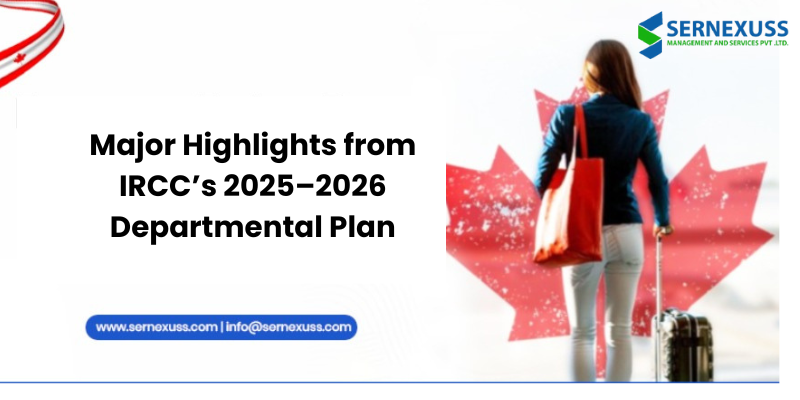Major Highlights from IRCC 2025 to 2026 Departmental Plan
Major Highlights from IRCC 2025 to 2026
Immigration, Refugees and Citizenship Canada (IRCC) unveiled its 2025–2026 Departmental Plan on June 20, 2025, spotlighting several pivotal reforms aimed at reshaping Canada’s immigration framework.
New Pathways & Permits
- Permanent Economic Mobility Pathways Pilot (EMPP):* The EMPP will be made permanent by the end of 2025, offering skilled refugees a direct route to permanent residency.
- Sector-Specific Work Permits:* A fresh work permit stream is being crafted to serve the agriculture and fish-processing industries, addressing chronic labour shortages.
- Post-Graduation Work Permit (PGWP) Revamp:* IRCC will launch a framework to refine field-of-study eligibility for PGWPs.
- Spousal Open Work Permit (SOWP) Updates:* Eligibility criteria for spouses of international students and foreign workers will be revised.
- Expanded Trade-Based Work Permits:* New free-trade agreement permissions will be added for Indonesia and Ecuador, with discussions under way for CPTPP newcomer and ASEAN pathway arrangements.
- Digital Client Solutions:* All IRCC users will soon access a unified digital account, launched progressively throughout 2025–2026.
- Welcoming Francophone Communities (WFC) Initiative:* National rollout of support for Francophone settlement outside Quebec continues through 2026.
- Refugee Student Pathway Exploration:* IRCC is examining opportunities to create a new permanent residency route for refugee students.
- GeoMatch Algorithm Pilot:* In collaboration with Stanford University, IRCC is trialing a GeoMatch tool to assist Express Entry applicants in selecting ideal settlement regions
Major Highlights from IRCC 2025 to 2026 in Economic Immigration Plans
The plan reaffirms several key priorities and policy directions:
- Express Entry Focus Areas:* Priority will be given to healthcare and trades professionals, educators, and Francophones. Additionally, IRCC aims for a minimum of 40% of new permanent residents via Express Entry to already be in Canada on temporary status.
- Temporary Resident Caps:* A cap will limit temporary residents (including students and workers) to no more than 5 % of Canada’s population by the end of 2026
- Permanent Resident Admission Limits:* Annual intake will be kept below 1 % of the population.
- LMIA-Based Work Permits:* The Temporary Foreign Worker Program’s annual quota will remain between 80,000–84,000 permits, reduced from 184,000 in 2023
- Study Permit Management:* Processing caps on study permits continue under the current levels.
- PGWP & SOWP Restrictions Reinforced: *New limitations on open work permits for students and spouses introduced as of January 2025
- Growth in Francophone PR Outside Quebec:* A target growth of up to 8.5 % for French-speaking newcomers settling outside Quebec
- Settlement Support and Passport Services:* Increased funding for newcomer integration services and expansion of online passport renewing capabilities
Performance Goals & Targets
Family Reunification in Major Highlights from IRCC 2025 to 2026
- Processing Efficiency:* IRCC aims to process at least 80% of applications within its established service timelines.
- Client Satisfaction:* Targeting a 90 % satisfaction rate among users
- Public Backing:* A public support threshold of 65 % for current immigration levels is set, improving from 50 % in 2023–2024.
- Economic Contribution:* The department expects international students and temporary residents to contribute a minimum of \$36

